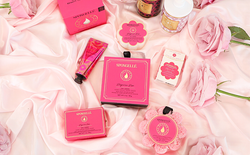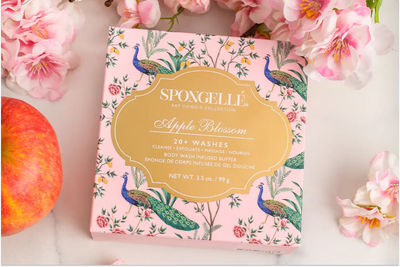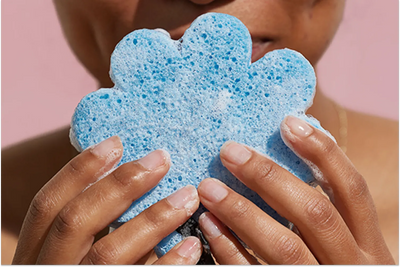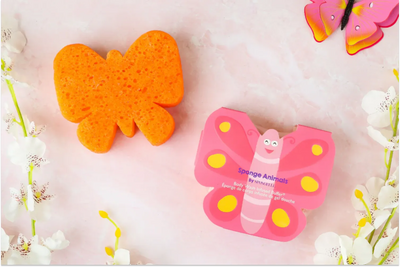The words “eco-friendly” and “sustainable” are often used interchangeably. Both terms focus on environmental awareness and social responsibility, yet they differ significantly. It’s crucial to know the difference between these two important terms.
With Earth Day right around the corner, it is an excellent time to be reminded of our responsibility to take the initiative to support sustainability through our daily choices. Let’s learn to decipher the difference between these two “green” terms so that you can make wiser product decisions for yourself and future generations.
What Does Sustainable Mean?
The word “sustainable” or “sustainability” is defined in a few ways. When someone says that they live sustainably, they intend to live so that their lifestyle choices do not deplete the earth’s natural resources. This lifestyle choice also results in maintaining a prosperous economy for future generations.
Sustainability has three pillars: people, planet, and profit. For businesses, this ensures the wealth of employees and people related to the company and minimizes or reverses its environmental impacts. These actions are just as necessary as turning a profit for future sustainability. Sustainable products are held to higher standards than other “green” product types.
For a product to be considered sustainable, it cannot use any resource at a faster rate than it is replenished. For example, if a company uses coffee beans to produce their product and the company harvests the beans faster than they grow back, the product is not sustainable.
What Does Eco-Friendly Mean?
Eco-friendly means not environmentally harmful. When you use this term and relate it to consumer products, everything from the production to the packaging must be considered safe for the environment.
Now, it gets tricky: The Federal Trade Commission (FTC) has strict guidelines that require an “eco-friendly” company to label their packaging, explaining why they are environmentally responsible. This labeling is necessary because the product being sold may harm the environment based on how the consumer uses the product.
For a product to be eco-friendly, it must be environmentally responsible and contain high-quality packaging. An example of this: Spongelle’s Spongology Shower With Nature Collection is eco-friendly and sustainable, providing you with a creamy, luxurious lathering experience that eliminates bacterial growth and reduces waste through its packaging.
What Does Green Mean?
“Green” is a multi-faceted term used to describe “eco-consciousness.” It implies better practices and improvements for how the environment’s resources are used with a reduced impact on human health and the environment. These improvements are made without sacrificing the current and future needs of the world.
To be “green” means to live one’s life or consciously run a business with the greater good of the environment in mind. This lifestyle choice ensures that our endeavors as a community and as individuals respect our plant’s resource limits. This means we as humans acknowledge how precious the Earth is and the importance of protecting it for future generations.
What’s the Difference Between Eco-Friendly & Sustainable Products?
The term “eco-friendly” is a very cut and dry term that means the product doesn’t harm the planet. Sustainability, however, represents a broad aspect of activities and issues that, when their needs are met, doesn’t impact future generations.
It focuses on the future, and the action generates environmental, economic, and social benefits without causing pollution or using excessive resources. The one word, “sustainability,” covers all of these crucial aspects.
Alone, a sustainable product has much higher standards than a “green” or “eco-friendly” product. But, by definition, sustainability includes “eco-friendly” and “green;” however, “green” doesn’t necessarily mean “sustainable.”
Confusing? Here’s an example: If a product is made from renewable resources that are “green,” but a life-cycle analysis exhibits that mass amounts of energy were used to manufacture and ship the goods, and there also isn’t a proper disposal method for the product, it is not sustainable.
When Is a Product Considered Sustainable?
Sustainable products provide benefits environmentally, economically, and socially. It focuses on the well-being of future generations by our making wise choices today. A product is sustainable when:
- The product uses less energy during manufacturing and production.
- The product causes no pollution.
- It provides environmental, economic, and social benefits.
How To Shop for Sustainable Products
- Choose reusable items such as grocery bags to reduce the use of plastics.
- Use reusable sandwich bags or beeswax food wraps to reduce the use of plastics.
- Shop for second-hand textiles such as clothing and bedding items.
- Choose textiles made from natural or recycled fibers, which reduces the amount of water and energy used to manufacture new items.
- Purchase only what you need. Purchasing fewer items reduces carbon emissions in the environment.
- Purchase recyclable items.
- Purchase items with minimal packaging, such as recyclable cardboard and paper.
- Use plant-based cleaners.
You practice sustainable living when you choose reusable non-plastic bags, products with minimal packaging, and second-hand textiles. These are just a few ways to shop sustainably, help other people, support the environment, and save money.
When Is a Product Considered Eco-Friendly?
When a product does not harm the environment, it is considered “eco-friendly.” A genuinely “eco-friendly” product example is:
- The product causes little to no harm to the environment.
- Product requires less energy during the production process.
- The product is biodegradable and renewable. A bamboo toothbrush is an example of a renewable source.
How To Shop for Eco-Friendly Products
- Purchase in-season local items from the farmer’s market.
- Buy used products.
- Utilize reusable shopping bags.
- Avoid pre-washed items.
- Avoid impulse purchases which result in buying things you don’t need.
- Use cloth diapers.
- Save fuel by shopping less.
What Is Greenwashing & How To Avoid It
“Greenwashing” is a term that defines the act of a company’s deceitful practice of placing broad, eco-friendly claims on their product packaging and marketing material. This labeling contains no research or support to back up these claims. Here are a few examples:
- A blanket or sheet set labeled “all-natural.” These types of products may be made from plant-based materials, but the manufacturing processes may synthetically alter them. These claims are deceiving because it suggests that the bedding materials contain fibers straight from nature (all-natural). Most bamboo fibers used in textiles are not natural; they are rayon, and these fibers are synthetically produced using chemicals.
- Companies greenwash when they display bogus environmentally-friendly symbols. Sadly, many companies that display eco-friendly logos they designed themselves. These claims are false unless they are truly green products approved by the FTC.
- Laundry soap labeled as “phosphate-free.” Phosphates were banned from laundry soaps years ago. This type of labeling is considered a “greenwashing” gimmick that companies use to sell their product.
How To Tell If a Company Is Really Eco-Friendly?
Environmental concern is a growing concern for many companies and individuals. This concern has created a consciousness among people to protect the planet; thus, companies thrive on their efforts to claim they support a cleaner environment.
Some companies claim to be eco-friendly when they are not. A quick way to determine if a company is genuinely eco-friendly is by examining its website. Does the company make environmental efforts their core concern? Are their values in line with their claims? Does the company have certifications backed by their claims? These are essential factors when determining if a company authentically stands by its claims.
Bottom Line
Living an eco-friendly and sustainable lifestyle is beneficial to the environment and the future of humanity. Earth Day is a welcomed reminder of how important it is to take the initiative in changing your purchasing practices. You can do your part by utilizing reusable shopping bags, purchasing items less often, using plant-based cleaning items, and reading product labels.
Practice sustainable purchasing by shopping the Spongelle Spongology Shower With Nature Collection. We at Spongelle take sustainable initiative in many of our bath and body products.
This line of bath products caters to our sustainable consumers. These body buffers deliver skin-softening, natural extracts, and formulas consisting of ingredients such as green tea, rosehip, hibiscus, and other essential oil fragrance blends.
Say farewell to your germ-infested loofah with an all-in-one body treatment that provides an at-home spa experience you’ll love. Our products are cruelty-free and vegan-friendly. We take sustainability seriously, so celebrate Earth Day, every day with Spongelle.
Sources:
Eco-friendly Definition & Meaning | Merriam-Webster
Green Guides | Federal Trade Commission















